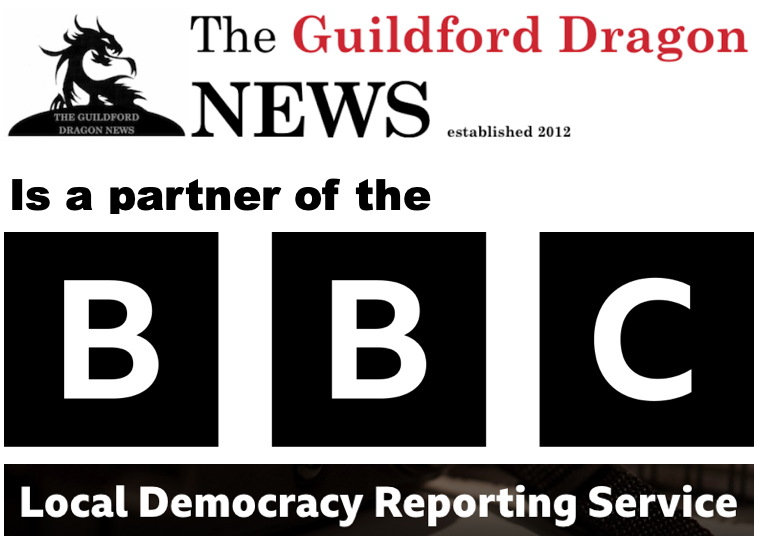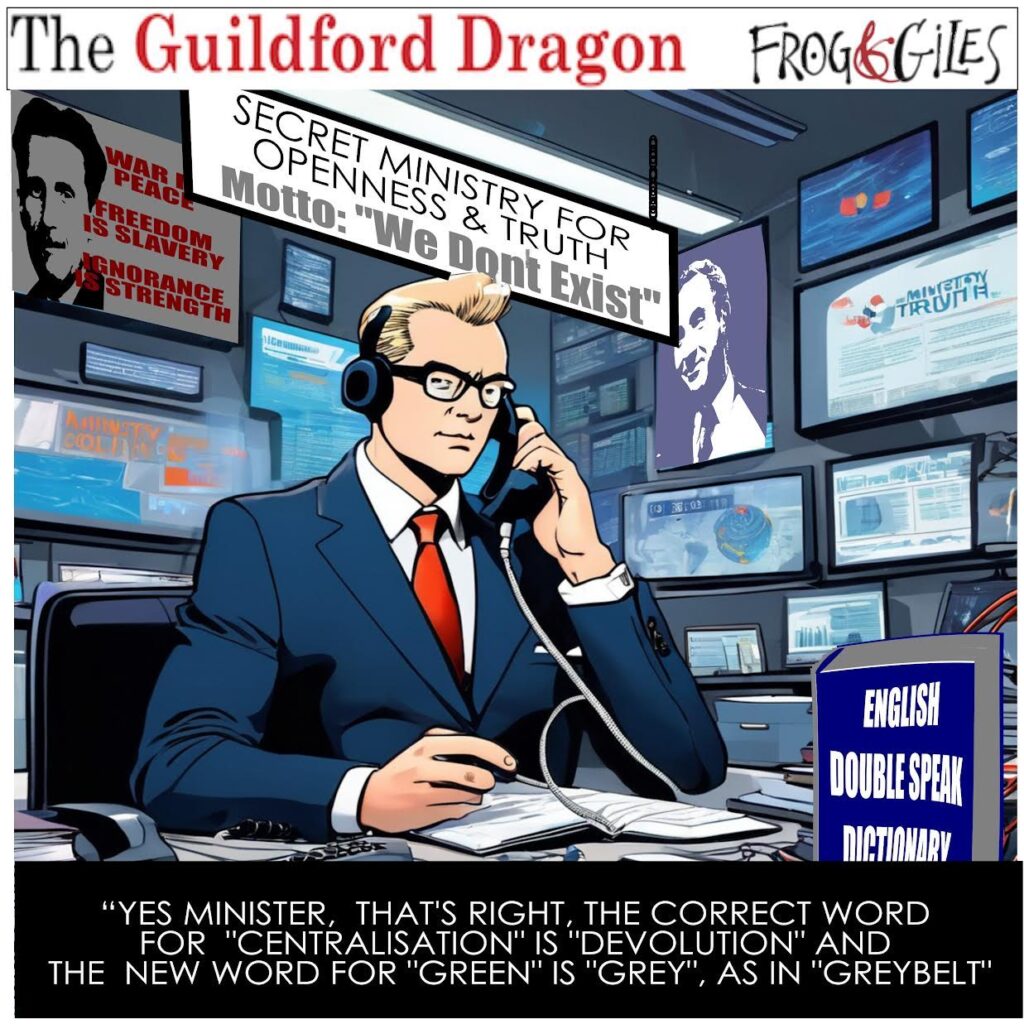 Abraham Lincoln
If given the truth, the people can be depended upon to meet any national crisis...
Abraham Lincoln
If given the truth, the people can be depended upon to meet any national crisis...
 Guildford news...
for Guildford people, brought to you by Guildford reporters - Guildford's own news service
Guildford news...
for Guildford people, brought to you by Guildford reporters - Guildford's own news service
Birdwatcher’s Diary No.330 Bempton Cliffs
Published on: 1 Jul, 2025
Updated on: 1 Jul, 2025
By Malcolm Fincham
Inspiring weather conditions continued to remain as we moved into the middle part of June, as another plume of warm air pushed up from Europe bringing temperatures up to 30 Celsius in southern counties of the UK.
To my surprise, for our 43rd anniversary of marriage, my wife had arranged for us both, and as a treat for me, a fortnight’s stay at Bempton, East Yorkshire.
They say a change is as good as a rest, and for me and my cameras this was both. It gave me the opportunity to photograph birds not seen within our landlocked Surrey countryside, as well as some occasionally seen locally that could be seen and heard in abundance in the hedgerows as we drove the country lanes, through the mosaic of open fields and farmlands on our arrival there.
Understandably, my wife, although a lover of wildlife too, was notably becoming quite frustrated as I excitedly continued to announce the various bird sounds instead of the directions we should be taking as we drove with our car windows open along the lanes.
Yellowhammers were surprisingly common there, singing at regular intervals from the hedgerows.
While a few corn buntings could be heard.
Several skylarks sang over the fields.
And a few meadow pipits could be viewed perched on fence posts.
Arriving in the village of Bempton where we were staying, we were first greeted by a greenfinch and a blackbird in song, perched on the TV aerial where we resided and giving us a pleasant reception.
Swifts screamed over the gardens in small groups.
And locally breeding house martins flew overhead.
Just a mile’s walk from the village at the other end of Cliff Lane, Bempton Cliffs RSPB can be found with free parking and a visitors centre.
A great delight to see about the buildings and the reserve were sizeable family groups of tree sparrows.
They were once resident in our Surrey countryside where only house sparrows can now be seen.
At Bempton nest boxes have been provided, with some birds having already started second broods.
Compared to house sparrows tree sparrows can be distinguished by their chestnut-brown crown and nape, white cheeks with a black spot, and a white collar.
About the building several swallows’ nests could also be observed, some with young ready to fledge.
Some having already just fledged could also be seen, mouths open, awaiting their parents return with a food delivery.
From the picnic tables, families of goldfinches could also be seen.
While close to the centre, a pair of sedge warblers had already raised their brood of young.
And the familiar sound of a common whitethroat could be heard and seen.
The few hundred yards walk from the visitors centre to the cliffs allowed further sighting of tree sparrows and linnets about the hedgerow.
Also adding sightings and calls of several male reed buntings.
And adding a few plainer looking females.
Arriving at the cliff face, with its well constructed safety fences and viewing platforms, immediately below was a cacophony of sound from the seabirds that had gathered along the cliffs.
Many having returned to the cliffs as early as March and April. Now with thousands of birds on show they were already attempting to breed another generation of young.
A gannet on the cliffs could be seen to have a red leg ring, suggesting it had almost certainly been raised along that part of the coastline several years before, and was now raising a youngster of its own.
Another gannet could also be viewed with a youngster almost the same size as itself.
While many more gannets could be viewed at eye-level as they glided past.
Several guillemots could also be seen with chicks along the narrow ledges along the rock face.
Joined by those impressive looking razorbills.
Also now paired up, along the cliff face were fulmars.
With numerous fulmars flying about the cliffs, typically with their ridged wings much likened to the Royal Navy’s Fairey Fulmar aircraft of the Second World War, also renown for flying long distances over the ocean and named after that bird.
Many of the more delicate looking kittiwakes of the gull species were also present and in good number.
Although having apparently declined along this part of the coastline in recent decades, it was a delight to pick out and photograph a few puffins that were reasonably close to view.
Even getting a few photos of some that had paired up and could be seen affectionately nuzzling each other with their bright, colourful beaks.
Staying local to the reserve gave me the opportunity for regular evening visits. By then, most of the daytime visitors had departed leaving just a handful of observers present.
And with very little in the way of rain during our fortnights’ stay, I became quite addicted to absorbing the surrounding ambience.
Another attraction was the regular sighting of a barn owl out hunting over the reserve.
And occasionally a second one making an appearance in the evening sunlight.
They were apparently in the process of raising two young that had recently been officially checked in a nest box situated on the former RAF base adjacent to the reserve.
Therefore, they were busily quartering the fields collecting small mammals to sustain their young.
And allowing me a good selection of photos to wet my appetite too!
On a few occasions a kestrel would make an appearance competing with the owls for the selection of small critters hiding in the long grass.
As the evening light began to fade, a few roe deer would also make an appearance.
While also adding a few sightings of brown hares.
Often concluding the day with some rather exalting sunsets.
Other places visited included Flamborough Head.
where groups of grey seals could be viewed bathing on the rocks.
I was also able to photograph a puffin with a beak full of sand eels.
And a pleasant drive across the North Yorkshire Moors allowed us a chance sighting of a red grouse as it poked its head up from the now coming into flower, heather-clad moorland.
The pleasant dry conditions had also encouraged plenty of butterflies out on the wing at the places we visited. Mostly ones I had already seen this year in Surrey, including lots of red admirals.
Several painted lady butterflies.
A few small tortoiseshell butterflies.
But also adding a large skipper butterfly to this year’s sightings.
Arriving back in Guildford on June 23 left me little time to catch up with some of the newly emerging butterflies that had been reported while we had been away, and before the month was over.
A visit to Sheepleas the following day allowed me to add a photo of my first of a dozen or so dark-green fritillaries, on display there.
As well as a few ringlets.
And also my first Essex skipper of the year.
A visit to Whitmoor Common also added a few purple hairstreaks that were freshly emerging on the oak trees that bordered the old horse paddock.
And with much thanks to reuniting with Bob for a visit to Chiddingfold Forest on June 28, I was able to add silver-washed fritillaries.
White Admiral butterflies.
And even, having seen a few purple emperors in flight while there, eventually have one come to ground for long enough to be photographed.
Also adding a handful of wood white butterflies to our day’s list.
Wrapping up both the day as well as the month and keeping up-to-date my Surrey butterflies, on our return we stopped off at a large elm tree in Shalford to view half a dozen or so white-letter hairstreak butterflies buzzing about its canopy.
Responses to Birdwatcher’s Diary No.330 Bempton Cliffs
Leave a Comment Cancel reply
Please see our comments policy. All comments are moderated and may take time to appear. Full names, or at least initial and surname, must be given.Recent Articles
- Highways Bulletin: Roadside Rangers Making a Visible Difference Across Surrey
- Letter: The Enduring Role of Parish and Town Councils
- Mr Carpenter’s Byfleet Seedling and Other Varieties of Apples
- Guildford MP Visits Local Satellite Firm During 40th Anniversary Year
- Letter: Only a Town Council Will Give Us to the Option to Choose on Some Local Services
- Comment: Parish Councils – Who Cares?
- Update: North Street Re-opened
- Letter: Parish and Town Councils Will Become More Essential Than Ever
- Plans for Several Railway Repair Projects Over August Bank Holiday
- Letter: We Should Thank Parish Councillors



Recent Comments
- Jim Allen on Letter: The Enduring Role of Parish and Town Councils
- Olly Azad on Comment: Parish Councils – Who Cares?
- Jan Messinger on Letter: The Enduring Role of Parish and Town Councils
- George Potter on Letter: Only a Town Council Will Give Us to the Option to Choose on Some Local Services
- Fiona Yeomans on Dragon Review: A Comedy of Errors and A Company of Rascals – Yvonne Arnaud Theatre
- D Kaur on ‘We Need To Get This Right,’ Says Coroner at Sara Sharif Pre-inquest Review
Search in Site
Media Gallery
Dragon Interview: Local Artist Leaves Her Mark At One of England’s Most Historic Buildings
January 21, 2023 / No Comment / Read MoreDragon Interview: Lib Dem Planning Chair: ‘Current Policy Doesn’t Work for Local People’
January 19, 2023 / No Comment / Read MoreA3 Tunnel in Guildford ‘Necessary’ for New Homes, Says Guildford’s MP
January 10, 2023 / No Comment / Read More‘Madness’ for London Road Scheme to Go Ahead Against ‘Huge Opposition’, Says SCC Leader
January 6, 2023 / No Comment / Read MoreCouncillor’s Son Starts Campaign for More Consultation on North Street Plan
December 30, 2022 / No Comment / Read MoreCounty Council Climbs Down Over London Road Works – Further ‘Engagement’ Period Announced
December 14, 2022 / No Comment / Read MoreDragon Interview: GBC Reaction to the Government’s Expected Decision to Relax Housing Targets
December 7, 2022 / No Comment / Read MoreHow Can Our Town Centre Businesses Recover? Watch the Shop Front Debate
May 18, 2020 / No Comment / Read More





































































Elaine McGee
July 22, 2025 at 9:58 pm
Absolutely brilliant pics! What an amazing holiday.